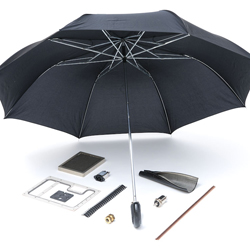 What is EMC?
What is EMC?
The definition of EMC is the measure of equipment’s capability to neither conduct electromagnetic energy nor radiate it. The equipment in turn should not be susceptible to any conducted or radiated emissions from any other source.
The two most important characteristics of electromagnetic waves connected with interference are the amplitude and the frequency of the waves.
The three main ways in which interference factors can be controlled are:
- Using filtering techniques to filter out unwanted frequencies and thus prevent them from travelling along signal and input lines.
- Reduction of the wave’s amplitude by careful circuit design and component layout.
- Prevent radiation emission to or from the equipment by the use of suitable components and materials to give EMI screening.
The first approach towards good design is to insert low pass LC filters into the input and output lines to the equipment.
The filters will divert any emanating interference along the lines to earth. The next concern is to design the various sections of the equipment to ensure that sections capable of radiation are isolated from each other by the use of careful PCB layout and the use of metal screens wherever required. The equipment will then need to be shielded to prevent the ingress or egress of electromagnetic radiation. This is done by the use of suitable conductive gaskets.
The EMI shielding of any enclosure involves all of the internal and external openings and components. The openings consist of covers, panels, doors. The components are panel meters, displays, indicator lights, connectors, switches, potentiometers, etc.
The success of EMI shielding an enclosure depends upon the correct selection and application of the screening materials available. To this end Jolex are in a position to advise you on the correct materials related to your problem.
Several reasons exist to create effective shielding of equipment. Among the more important benefits are:
- To minimise radiation and thereby prevent interference with other sensitive areas or equipments.
- To reduce any radiation to a level this will make it safe for life for example, microwave ovens.
- To prevent unwanted reflections inside equipment which could cause it to malfunction.
- To ensure electrical and mechanical compatibility with the metal enclosure.
- To meet local and international EMC legislation.
Thermal Management
Most components have a maximum, effective operating temperature. Failure to maintain the temperature below this level can lead to a variation in electrical properties and overall increased failure rates.
Metal heat sinks are typically connected to components which generate a large amount of thermal energy when in use. These are used to dissipate such energy away from the device to avoid failure due to over-heating.
Heat sinks have proven to be very effective over the years however in order to ensure full contact and therefore maximum efficiency, thermal management products are used alongside.
